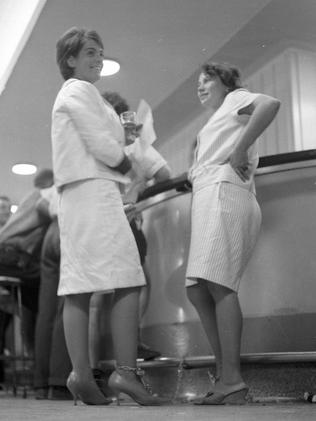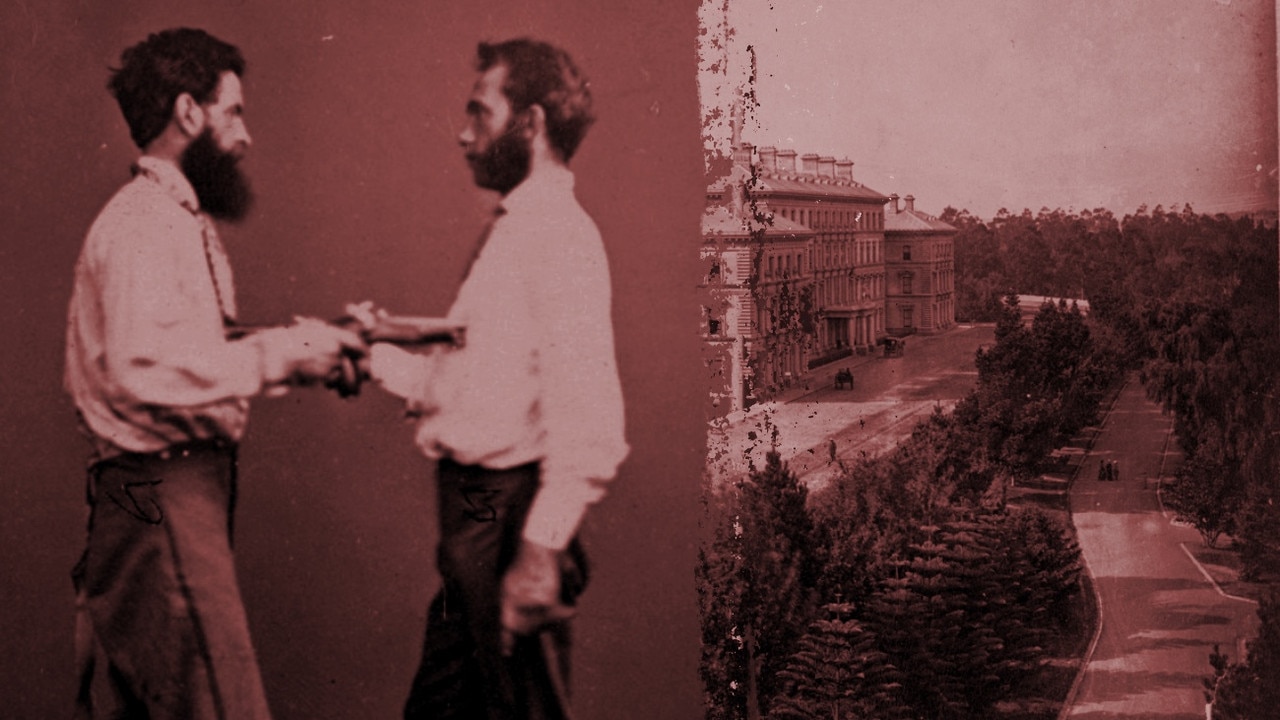Drinking and partying in Melbourne in the 60s, 70s and 80s
MELBOURNE pubs once closed at six o’clock, women had to fight for the right to drink in bars, and we raved at superclubs in the ‘80s. Take a look back at our city’s changing nightlife.

IT hasn’t always been easy to party in Melbourne.
Until 1966, harsh liquor licensing closed pubs at 6pm and caused rampant binge drinking and fights in the streets as Melbourne’s men knocked off work and threw back as many beers as they could in an hour.
Then Melbourne rolled into the 1970s, liquor laws were more relaced and pub rock and disco took the city by storm — and women were finally granted the right to drink alongside men in the city’s pubs.
And with tight jeans and teased hair, Melbourne raved to electronic music and experimented with synthetic drugs in the 1980s — the burgeoning club scene taking Victorians on a wild ride into the ‘90s.
Take a look at the changing face of Melbourne’s nightlife.

1960s — tough liquor laws and binge drinking
It’s 1960 and almost time for Friday beer o’clock. You’re poised and ready to run from the office at 5pm to the nearest pub or hotel bar.
From there it’s a race to drink as much as you can before the pub closes at 6pm.
Men and women separated at the pub door, with the ladies in the lounge while the blokes crammed into the loud, smoky public bar.
Before long people had consumed their weight in beer and scuffles broke out as men jostle to get a final drink as six o’clock approaches.
And then like magic, the pubs emptied out onto Melbourne’s streets dead on six, with drunken louts spilling onto the pavement in their thousands.
“The daily demonstration of piggery is something that no other country in the world can match,” journalist Reg Leonard said in 1955.

The ‘six o’clock swill’, as it was known, fostered an endemic culture of daily binge drinking, which in turn created persistent problems of alcohol-related violence.
The laws were designed to curb drinking and get men home to their families, but they inadvertently created a far bigger problem.
Drunken patrons regularly got into alcohol-fuelled fights in and around the pub, and many husbands arrived home in the early evening extremely drunk.
This destructive ‘tradition’ persisted through most of the 20th century but it quickly disappeared after 1966, when changes to the licensing laws in most states allowed pubs to stay open until 10pm.
In the city there were live music venues and discos, but none were licenced and they all closed in time for patrons to get the last train home — all very civilised.
HOW MELBOUNRE WAS BUILT: IN PICTURES


1970s — ladies in the public bar, disco and sharpies
Women were banned from drinking in public bars, and instead were confined to the adjacent ‘ladies lounge’ throughout the 1960s.
In 1965 publicans still faced fines of between £10 and £20 if they served women in public bars — the gender inequality enforced by legislation.
On March 31, 1965 Rosalie Bogner and Merle Thornton chained themselves to the bar at Brisbane’s Regatta Hotel.
Their protest sent a strong message and sparked a years of lobbying for women to join men for a Friday beverage at the local pub.
By 1970 women were granted the right to drink in public bars — finally able to get legless just like their husbands had for decades.



The 70s in Melbourne were also all about rock and roll and the sharpies — so called for their slick, sharp dress style — with many gangs from all over of Melbourne.
Sharpies would often congregate in large numbers, regularly attending live bands at town halls and discos.
Lee or Levi jeans and cardigans were the outfit of the day — often individually designed by group members — who would try to outdo other sharpies by creating the best patterns, colours, and detail.
1980s — the rise of the nightclub.
The 1980s in Melbourne was all about excess. High fashion, open drug use, irresponsible service of alcohol and sexual freedom — and big hair and mullets.
The decade started with beers and bands at the pub and evolved into rave parties, electronic dance music, and designer drugs.

In 1986, after a significant refit, the Metro nightclub was unrivalled by any other club in town.
Clubbers, bored with pub rock, were enticed back to the disco with fresh beats: hip hop, new jack swing, the gay-friendly Hi-NRG and, on the fringe, house, electro and techno.
Some of Melbourne’s most iconic party venues started in the 1980s, including the original Chasers (1978), Billboard (1980), Chevron (1983), Palace (1985) and Inflation (1986).

There were also significant changes to liquor licences in the 1980s with the release of the Niewenhausen report which promoted the liberalisation of licencing in Victoria.
Soon liquor licences were being granted at a rate of about two per day by 1986 — with licenced cafes, restaurants and bars popping up all over Melbourne.



